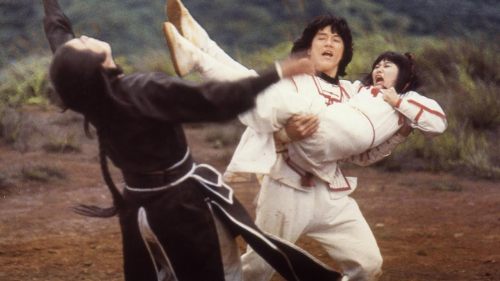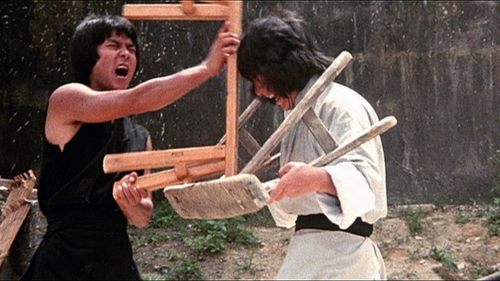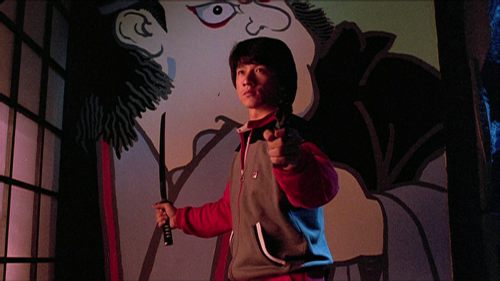Discs in a Box: Criterion’s America Lost & Found (The BBS Story)
The Movies, or “What the Hell is ‘BBS’ Anyway?”
BBS Productions was a company put together in the late 1960’s that produced some of the most influential and successful films from the middle of the New Hollywood period (also referred to as The American New Wave). The men who gave the company its acronym were director/writer Bob Rafelson along with producers Bert Schneider and Steve Blauner.
The movies were made inside The System for The Man, but they promoted the counterculture movement, which was previously untouched (or untouchable). They focused on the shattered American Dream that was sprinkled across the youth of the country unapologetically and unflinchingly. I’ll roll through all seven films included in the set chronologically, giving special focus to the ones that people are less familiar with in general or that have never been on home video.
The Monkees wanted to ditch their “TV show for tweens” image by making a psychedelic, surreal movie that contained cinematic multitudes. The cocaine and acid-fueled film that resulted, Head (1968), was co-written by director Bob Rafelson (the first “B” in “BBS”) and Jack Nicholson, and exec -produced by Bert Schneider (“B” number two). Nothing resembling a traditional narrative is to be found, with its stream-of-consciousness throughlines threading across various genre and mini-movies inside of mini-movies. Particularly visually arresting is a dance sequence that rapidly cuts between black-costumes-on-white-set and the inverse. Annette Funicello is in it, as are Victor Mature, Frank Zappa, and Sonny Liston.
With a perplexing, basically nonexistent promotional campaign (which featured the director’s face as the poster), it flopped upon release in 1968. In the four decades since, however, it’s steadily grown in strength as a major cult landmark. I’d never seen it until now, and it’s absolutely fascinating to see this side of The Monkees, which had only been described to me previously.
The next film in the set is the one that got BBS Productions its “make a bunch of movies for no more than a million bucks and you have complete creative control” deal, the likes of which hasn’t been seen since. Easy Rider (1969) made big huge superstars out of Peter Fonda, Jack Nicholson, and director/co-star Dennis Hopper. To date, my favorite panel discussion at any film festival involved Fonda at SXSW recounting to Harry Knowles how, when in the hospital for heat exhaustion, Hopper called him to ask where the hell he was, that “[he] and Jack are out doing acid at DH Lawrence’s grave man, it’s far out!”.
A year later, Bob Rafelson hopped back in the director’s chair to direct Jack Nicholson in Five Easy Pieces (1970), which would produce one of his most iconic roles, bad boy Bobby Dupea. A piano-playing oil rig worker, Dupea ventures back home to visit his ailing dad, with whom he doesn’t get along to say the least.
Coming off yet another big success, Nicholson decided to take a turn behind the helm himself on Drive, He Said (1970), which is presented on the same disc as A Safe Place (1971). Together, they make up the neglected double feature of this era. I’ve been waiting years and years for them both to appear on home video, since they represent a pretty significant gap in Jack Nicholson’s filmography as both a director and an actor. Drive captures the spirit of campus life in the early 70’s from the perspectives of a pair of roommates. We find them as they’re both becoming disillusioned with their respective microcosms. One is a basketball player losing interest in his game, both on and off the court. The other is a budding anarchist, drifting further and further away from mainstream society (or whatever that meant in 1970). It didn’t knock my socks off, but I did find it to be an intriguing exercise in guerilla filmmaking long before that was a style to be revived. Also striking? The sheer amount of naked cock on display.
Jaglom’s consciousness/subconscious/unconscious driftfest that is A Safe Place was the bigger standout for me. Concerning itself with another protagonist (Tuesday Weld) trying to detach herself from the real world, I found it more focused than Drive. I realize that’s a really odd thing to say about a free-associating narrative, but it’s true. The film takes a distinctly feminine slant. It isn’t necessarily empowering or otherwise feminist, but it’s an interesting counterpoint to the overtly male perspective found in Nicholson’s film. Orson Welles opens the film with an esoteric musing on the nature of dreaming. He appears, disappears, and reappears throughout, and he was one of the more interesting pieces of the puzzle to me, since you never know when he’s going to appear out of nowhere.
Up next is Peter Bogdanovich’s masterpiece, The Last Picture Show (1971), a 70’s movie set in the 50’s. I’ve had my fair share of arguments as to whether it takes a revisionist stance on the idealistic view of the early 50’s, or whether it takes the extra gloss off of an era that wasn’t as great as musicals like Grease make it out to be.
After a three film break from the overriding auteur of the set, we loop back to Bob Rafelson with The King of Marvin Gardens (1972), which once again re-teamed him with Nicholson and Bruce Dern playing brothers, a radio host and con man, respectively. Marvin Gardens follows the lead of one of the brothers to the peril of the other, and it’s a fitting finale for this particular journey through the American New Wave. Brother leading brother into certain danger mirrors what I take the thrust of the whole movement to be: self-interest above all else (or else).
The Package
Criterion has put six slim digipacks in the case alongside a nice little booklet that covers not only individual films, but the entire BBS era, touching on the ripples created by their films. The individual film digipacks feature art on both the discs and the cardboard backing under the clear plastic disc holder that make more sense after combing through the films and their respective extras.
I’ll be adding some photos later tonight in the interest of getting this up and posted for now.
The Look and Sound
The video transfers on all films are clean, detailed, and appropriately film-like, with appropriate levels of grain. This is the first appearance of all the included films in HD on home video with the exception of Easy Rider. It’s important to note that this is a different transfer of Rider than last year’s highly-regarded Sony disc. At the time of that disc’s release, I wrote that I couldn’t imagine how it could be improved, but it undoubtedly is here. Not only was the transfer supervised and approved by director of photography Lázló Kovács (as are those of Five Easy Pieces and Marvin Gardens), but the contrast and color saturation just breathe so much better. The transfers of Drive, He Said (supervised by Nicholson personally) and A Safe Place are likewise stunning, even though they’re both on the same physical disc. Bogdanovich supervised the transfer on The Last Picture Show, the only black & white one of the lot, and it’s never looked better to me on home video.
All of the titles in the set include uncompressed original monaural soundtracks. Head and Easy Rider both include newly-created DTS-HD Master Audio 5.1 tracks in addition to the original tracks. That means that you can hear either one the way it sounded theatrically, or you can have it rock out your surround channels. I’m glad Criterion didn’t make the 5.1 track the default option on either disc, like some studios are starting to on catalog titles that they “upgrade” to 5.1 Surround.
The Supplements
Additions will be made to this section over the next 24 hours as I finish getting through some more of the documentaries and commentaries. In general, the same set of interviews with directors, producers, and actors from all the included films were judiciously edited into the various 2009-vintage featurettes scattered across the set.
Head
Audio commentary with The Monkees
New video interview with director Bob Rafelson
New documentary on BBS featuring critic David Thomson and historian Douglas Brinkley
Screen tests with The Monkees
Trailers
TV & Radio spots
Ephemera, including behind-the-scenes photos by Henry Diltz
Rare 1968 television interview with The Monkees
In the recently-recorded video interviews, no one holds back talking about the copious amounts of drugs ingested to create a movie as weird as Head. Rafelson, in particular, is especially candid here and elsewhere throughout the set.
Easy Rider
Two audio commentaries: (1) Dennis Hopper, and (2)* Hopper, Peter Fonda, & production manager Paul Lewis
Born to Be Wild* (1995) & “Easy Rider”: Shaking the Cage (1999), documentaries about the making and history of the film
Television excerpts showing Hopper and Fonda at the Cannes Film Festival*
New video interview with BBS cofounder Steve Blauner* [18:40]
Theatrical trailers
(* denotes extras not available on Sony edition)
Not only is the picture an improvement on top of an already-solid Sony disc, but there’s a bunch of new stuff on this disc that aren’t on the standalone release. In particular, the Blauner interview sheds some light on the often-overlooked “S” in “BBS”, and how his involvement was just as crucial as Rafelson and Schneider. The second commentary comes from the 1995 Laserdisc special edition, and I hope it’s part of a trend of LD commentaries showing up on future releases.
Five Easy Pieces
Commentary with director Bob Rafelson and interior designer Toby Rafelson
Soul Searching in “Five Easy Pieces”, a 2009 video piece with Bob Rafelson [9:08]
BBStory, a 2009 documentary about the BBS era, with Rafelson, Bogdanovich, Jaglom, Nicholson, actors Karen Black and Ellen Burstyn, among others
Audio excerpts from a 1976 AFI interview with Rafelson
Theatrical and teaser trailers
This disc has the overarching beast that is BBStory, which covers bits of the entire BBS oeuvre, and serves as the catch-all connecting piece to the various other featurettes spread across the other discs. The most affecting moment in the whole thing involves Timothy Bottoms recounting how a particular scene in Last Picture Show came eerily to the forefront of his mind recently for him in a moment of profound sadness. Jack Nicholson recounts his first meeting with Orson Welles.
Drive, He Said
“Drive, He Said”: A Cautionary Tale of Campus Revolution and Sexual Freedom [10:41]
Trailer
Nicholson caught wind of an actual riot going on, and hightailed his actors and crew there. Jack uses the phrase “symphony of dicks” in the above piece as well as plenty of other cursing. He really lets loose, and it’s a delight to behold. I’ve re-watched that on its own three times.
A Safe PlaceCommentary with director Henry Jaglom
Henry Jaglom Finds “A Safe Place” [6:36]
Notes on the New York Film Festival (1971) [28:33]
Outtakes and Screen Tests [25:24]
Trailer
The featurette was recently recorded in 2009, with Jaglom discussing the film’s audience and its themes and inspirations. “Notes” was recorded in 1971, at the ninth New York Film Festival, where A Safe Place garnered one of the most divisive reactions of any film in the fest’s history. It was rumored to have started a fistfight. Peter Bogdanovich joins Jaglom in a joint vintage interview with host Molly Haskell. Bogdanovich’s Last Picture Show was the only other American film there that year. I only have three more words for you: “Orson Welles outtakes”.
The Last Picture Show
Two audio commentaries: (1) Bogdanovich, Cybill Shepard, Randy Quaid, Cloris Leachman, and Frank Marshall recorded in 1991, and (2) with Bogdanovich, recorded in 2009
“The Last Picture Show” : A Look Back (1990)
Picture This (1990)
A Discussion with Filmmaker Peter Bogdanovich, a 2009 Q&A
Screen tests and location footage
Excerpts from a 1972 television interview with director Francois Truffaut about the New Hollywood
Theatrical trailers
Last Picture Show (like Five Easy Pieces) was previously a part of The Criterion Collection on laserdisc, and here we see something that I hope becomes a trend: the laserdisc commentary from 20 years ago is on the Blu-ray. Also included are all (as far as I can tell) of the extras from Sony’s recent DVD re-release of the movie, along with George Hickenlooper‘s excellent Picture This, which I’ve long-considered the essential supplement to this film, just as Hearts of Darkness is to Apocalypse Now.
The King of Marvin Gardens
Selected-scene commentary with director Bob Rafelson
Reflections of a Philosopher King, a 2009 video piece with Rafelson and Ellen Burstyn
Afterthoughts, a 2002 interview with Rafelson, Kovács, and actor Bruce Dern
Theatrical trailer
The old DVD edition of this movie had nothing but some trailers for other movies and a single lobby card in its very own gallery, so this is a huge leap forward indeed.
Final Thoughts
The key to enjoying this set is in realizing that all seven films contained within are essential to one another. They do a rather stunning job of explaining one another and the generation adrift that made, starred in, and wrote this part of the American cultural record. I’ve seen plenty of people bitch that the movies aren’t available separately, so let me address and quash that here and now.
If you could buy Criterion’s Easy Rider on its own, would you have bought Drive, He Said and A Safe Place at all? For the average consumer, probably not. This set existing as an all-or-nothing means that some of these titles actually hit home video in the first place (much less Blu-ray).
Yes, that equates to restricting your options when it comes to cherry picking the movies that you like the best. In a way, I understand the thought behind the arguments I’ve seen touting this as home video socialism. I still think those arguments are ridiculous, and that’s being generous.
If you want to get full of consumer indignation, then go ahead. The plain fact of the matter is that this set is put together the way that it is for the same reason that Apple designs its products the way that it does: to curate a specific experience. Don’t hold your breath for these to be broken out into individual releases, since I don’t expect Sony/Columbia’s licensing deal permits for that to happen. Be glad that comprehensive badassery like this actually makes it to disc-based media in the first place.
Amazon has the Blu-ray set for $87.49 at present. That breaks down to $12.50 per movie, which is less than per-ticket cinema admissions across much of the country at this point. The DVD edition comes out next month for very slightly less, but if you’re throwing this kind of cash at a set like this, you’ve probably already gone HD anyway.



